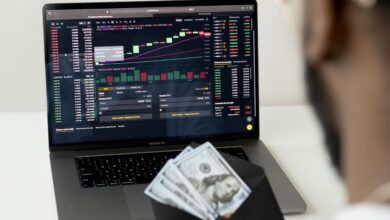Fueling Inflation: Unpacking the Complex Relationship Between Oil Prices and Economic Stability

In an era where economic stability is paramount, understanding the intricate relationship between oil prices and inflation has become increasingly essential for policymakers, businesses, and consumers alike. As a critical driver of global economies, fluctuations in oil prices can reverberate through various sectors, influencing production costs, consumer spending, and ultimately, the rate of inflation. This article delves into the complex oil-inflation nexus, exploring how changes in oil prices have historically shaped inflation rates and the broader economic landscape. We will trace the historical trends that illuminate this connection, offering insights into past events that have seen oil prices surge or plummet and their corresponding effects on inflationary pressures. Furthermore, we will navigate the contemporary economic implications of this relationship, examining how current oil market dynamics continue to impact inflation rates and what this means for future economic stability. Join us as we unravel the multifaceted ties between oil prices and inflation, shedding light on one of the most critical economic relationships of our time.
- 1. "The Oil-Inflation Nexus: Understanding the Connection"
- 2. "Historical Trends: How Oil Prices Have Influenced Inflation Rates Over Time"
1. "The Oil-Inflation Nexus: Understanding the Connection"
The relationship between oil prices and inflation is a critical area of study in economics, as fluctuations in oil prices can have far-reaching implications for the broader economy. Oil is a fundamental input in many industries, serving not only as a primary energy source but also as a key component in the production of various goods and services. Consequently, changes in oil prices can significantly influence production costs, transportation expenses, and ultimately consumer prices.
When oil prices rise, the immediate impact is often seen in increased costs for transportation and manufacturing, which can lead businesses to pass these costs onto consumers in the form of higher prices. This phenomenon, known as cost-push inflation, occurs when the supply chain experiences disruptions or increased input costs, prompting a general increase in price levels. As consumers face higher fuel costs and elevated prices for goods, their purchasing power diminishes, which can lead to a decrease in overall demand if wages do not keep pace with inflation.
Conversely, falling oil prices can exert downward pressure on inflation. Lower oil prices typically reduce transportation and production costs, allowing businesses to maintain or even lower prices for their products. This can stimulate consumer spending and contribute to economic growth, although the effects can vary based on the economic context and the structure of the oil market. For instance, in economies heavily reliant on oil production, declining prices may lead to reduced investment and job losses, potentially creating deflationary pressures.
The correlation between oil prices and inflation is not linear and can be influenced by various factors, including geopolitical events, monetary policy, and consumer expectations. Central banks often monitor oil price movements closely, as significant increases in oil prices can complicate their efforts to manage inflation and stabilize the economy. In times of rising oil prices, central banks may face the challenge of balancing the need to control inflation against the risk of stifling economic growth through higher interest rates.
Furthermore, the relationship can be complicated by the presence of other inflationary pressures, such as supply chain disruptions, labor market dynamics, and global economic conditions. In recent years, the COVID-19 pandemic has highlighted how interconnected these factors can be, as disruptions in oil supply and shifts in consumer behavior led to unexpected inflationary spikes.
In conclusion, the oil-inflation nexus reflects a complex interplay of market dynamics and economic policies. Understanding this connection is crucial for policymakers, businesses, and consumers alike, as it can help navigate the challenges posed by volatile oil prices and their broader economic implications. As we move forward, continued research and analysis will be essential to unraveling this intricate relationship and anticipating its effects on the global economy.
The relationship between oil prices and inflation is a complex and multifaceted topic that has garnered significant attention from economists, policymakers, and market analysts alike. Oil is a critical input in many sectors of the economy, influencing production costs, transportation expenses, and ultimately, consumer prices. As such, fluctuations in oil prices can have profound implications for inflation rates.
Historically, rising oil prices have been associated with increased inflation, particularly in oil-dependent economies. When oil prices surge, the costs of goods and services that rely on petroleum products—such as transportation and manufacturing—tend to rise as well. This phenomenon, often referred to as cost-push inflation, occurs when increased production costs lead businesses to pass higher expenses onto consumers in the form of elevated prices. For instance, during periods of geopolitical instability or supply chain disruptions, oil prices can spike, resulting in immediate ripple effects across the economy.
Conversely, the relationship is not always linear. In some instances, rising oil prices may not translate directly into higher inflation if demand for goods and services weakens concurrently, leading to a reduction in overall consumer spending. Additionally, factors such as technological advancements, shifts toward renewable energy, and changes in consumer behavior can mitigate the impact of oil price fluctuations on inflation. For example, increased fuel efficiency in vehicles and the rise of electric cars can dampen the sensitivity of inflation to oil prices.
Central banks also play a crucial role in this relationship. Monetary policy responses to rising oil prices can influence inflation expectations. If a central bank perceives rising oil prices as a persistent threat to price stability, it may opt to increase interest rates to curb inflationary pressures. However, such actions can also have the unintended consequence of slowing economic growth, creating a delicate balancing act for policymakers.
Furthermore, the correlation between oil prices and inflation can exhibit different patterns across various time frames. Short-term spikes in oil prices may lead to immediate inflationary pressures, while long-term trends might reveal a more nuanced relationship influenced by broader economic conditions, technological changes, and global market dynamics.
In conclusion, while there is a notable correlation between oil prices and inflation, it is essential to consider the broader economic context and the myriad factors at play. Understanding this relationship requires a nuanced approach, taking into account not only the direct effects of oil price changes but also the responses of consumers, businesses, and policymakers in an ever-evolving economic landscape.
2. "Historical Trends: How Oil Prices Have Influenced Inflation Rates Over Time"
Throughout history, the relationship between oil prices and inflation has been a significant area of study, particularly due to the crucial role that oil plays in modern economies. The volatility of oil prices can have profound effects on inflation rates, influencing not only consumer prices but also broader economic indicators.
In the 1970s, for instance, the world experienced two major oil shocks that dramatically illustrated this relationship. The first oil crisis in 1973, triggered by an OPEC embargo, saw oil prices quadruple, leading to widespread economic disruptions and skyrocketing inflation in many countries. The U.S. inflation rate surged to nearly 12% by 1974, largely driven by rising energy costs that permeated through various sectors, impacting transportation and manufacturing costs. Similarly, the second oil shock in 1979, prompted by geopolitical tensions, resulted in another wave of inflation, further entrenching the idea that oil prices are a key driver of overall price levels in the economy.
Moving into the 1980s and 1990s, a period of declining oil prices coincided with reduced inflation rates in many advanced economies. The collapse of oil prices in the mid-1980s, for example, contributed to a decline in inflation as lower energy costs eased pressures on consumer prices. This period highlighted how a decrease in oil prices can lead to lower inflation, reinforcing the cyclical nature of the relationship.
In the early 2000s, the relationship became more complex as various global factors influenced both oil prices and inflation. The rapid economic growth in emerging markets, particularly China, increased demand for oil, leading to a spike in prices around 2008. This surge was accompanied by rising inflation rates, culminating in a peak inflation of over 5% in the U.S. during that period. However, the global financial crisis that followed saw a drastic drop in oil prices, which in turn helped to moderate inflation rates as economic activity slowed.
The 2010s brought further fluctuations, with periods of high oil prices interspersed with declines. The correlation between oil prices and inflation continued to evolve, influenced by factors such as monetary policy, supply chain dynamics, and changing consumer behavior. The advent of renewable energy sources and shifts toward energy efficiency have also begun to alter the traditional oil-inflation narrative, suggesting that the relationship may not be as straightforward moving forward.
In recent years, particularly during the COVID-19 pandemic, oil prices underwent significant volatility, with a historic drop into negative territory in 2020, followed by a rapid recovery. During this time, inflationary pressures emerged as economies reopened, driven by supply chain constraints and pent-up demand. This has reignited discussions about the direct correlation between oil prices and inflation, as rising energy costs have contributed to broader inflationary trends across various sectors.
Overall, the historical trends indicate that while oil prices have consistently influenced inflation rates, the degree and nature of that influence can vary significantly depending on a multitude of factors, including geopolitical events, economic policies, and shifts in global demand and supply. Understanding this dynamic relationship remains crucial for policymakers and economists as they navigate the complexities of modern economic landscapes.
In conclusion, the intricate relationship between oil prices and inflation is a pivotal factor in understanding economic dynamics. As explored in our analysis, fluctuations in oil prices have historically had profound impacts on inflation rates, illuminating a complex nexus that shapes consumer behavior, production costs, and overall economic stability. The evidence presented in our historical trends section underscores that while the correlation is not always linear, the ripple effects of oil price shocks can lead to significant inflationary pressures, particularly in economies highly reliant on fossil fuels.
As we move forward, it becomes increasingly essential for policymakers and economists to consider this correlation when crafting strategies to mitigate inflationary risks. With global energy markets continuously evolving and the push for sustainable alternatives gaining momentum, the implications of oil prices on inflation will likely remain a critical area of study. Understanding this relationship not only aids in forecasting economic trends but also enhances our ability to respond to future challenges in an interconnected world. Ultimately, a comprehensive grasp of the oil-inflation nexus will be crucial for navigating the complexities of the global economy in the years to come.





